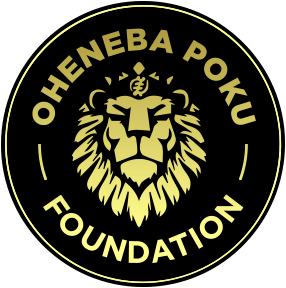Introduction
Artisanal and small-scale mining (ASM) has led to significant land degradation across Africa, particularly in countries like Ghana, Nigeria, and the Democratic Republic of Congo (DRC).
The Oheneba Poku Foundation’s Strategic Mining Enclave Landscape Restoration Programme seeks to address these challenges by restoring 1 million acres of mined land by 2030.
The policy outlined here provides the roadmap for restoring the degraded land, promoting reforestation, and integrating sustainable land use.
Objectives
- Restore 1 million acres of degraded mining landscapes by 2030.
- Rehabilitate land for future use in agriculture, forestry, and eco-tourism.
- Reforest mining lands to increase biodiversity and ecosystem resilience.
- Develop community-based land management practices to ensure the long-term viability of restored lands.
- Enhance community livelihoods through sustainable agricultural and forestry practices.
Scope and Coverage
The programme will be implemented in Ghana, Nigeria, and the DRC. These countries have extensive artisanal and small-scale mining activities and large tracts of degraded land in need of rehabilitation. The programme will focus on regions that have seen the most significant environmental impact from mining activities.
- Ghana: Approximately 200,000 acres to be restored in areas such as the Ashanti and Western regions.
- Nigeria: 300,000 acres to be restored, primarily in the northern states affected by illegal mining activities.
- DR Congo: 500,000 acres to be restored, focusing on regions in the Katanga and Ituri provinces, heavily impacted by mining.
Key Stakeholders and Partnerships
- Governments: Ministries of Environment, Mining, and Agriculture in Ghana, Nigeria, and the DRC.
- International Organisations: World Bank, United Nations Environment Programme (UNEP), African Union.
- Local Communities: Traditional leaders, community groups, and local cooperatives.
- Private Sector: Mining companies and agribusinesses interested in contributing to land restoration.
- NGOs: Organisations specialising in reforestation, land rehabilitation, and community development
Strategic Framework
Phased Approach
The programme will be implemented in three phases:
- Phase 1 (2024-2026): Assessment, stakeholder engagement, pilot projects.
- Phase 2 (2026-2028): Full-scale rehabilitation, land restoration activities, reforestation.
- Phase 3 (2028-2030): Post-restoration monitoring, evaluation, and sustainable land use transition.
Community Engagement and Participation
Community workshops and educational programmes will be developed to promote sustainable land management practices and ensure that local communities are fully engaged in the rehabilitation process.
Environmental Impact Assessment (EIA)
Environmental impact assessments will be conducted for each targeted region, focusing on the most effective restoration strategies.
Land Rehabilitation Techniques
Restoration efforts will focus on soil rehabilitation, water management, and erosion control, with an emphasis on reintroducing native plant species.
Reforestation and Biodiversity Preservation
Indigenous tree species will be prioritised to promote biodiversity. Special attention will be given to the creation of wildlife corridors to support the re-establishment of ecosystems.
Monitoring, Evaluation, and Reporting
A detailed M&E framework will be established, with key performance indicators (KPIs) to track the success of the programme.
Legal and Policy Compliance
Compliance with national and international environmental policies will be ensured, with regular audits to track progress against set standards
Capacity Building and Training
Capacity building programmes will be rolled out for local communities, focusing on sustainable land management, agroforestry, and conservation techniques
Quantifiable Targets and Key Performance Indicators
Quantifiable Targets:
- 1 million acres of land restored by 2030, broken down by country:
- Ghana: 200,000 acres
- Nigeria: 300,000 acres
- DRC: 500,000 acres
- 500,000 trees planted across all three countries by 2028.
- 30,000 community members trained in sustainable land management practices by 2027.
- 10% increase in biodiversity in restored areas by 2030, measured through flora and fauna assessments.
- 80% of degraded lands to be converted to productive use (agriculture, forestry, eco-tourism) by 2030.
KPIs:
- Acreage Restored: Measured annually, with targets of 100,000 acres restored by 2025, 500,000 acres by 2027, and 1 million acres by 2030.
- Tree Survival Rate: Aim for an 85% survival rate of planted trees, monitored annually.
- Community Involvement: Number of community members trained and participating in restoration efforts, with targets of 10,000 people trained by 2025 and 30,000 by 2027.
- Biodiversity Index: Track species diversity, with a target to increase biodiversity by 10% in the first 5 years of the programme.
- Soil Health Improvements: Baseline soil health indicators to be measured at the start of the programme, with annual improvement targets.
- Water Quality: Improved water quality in mining-affected areas, measured through reduction in contamination by heavy metals and toxins by 20% by 2030.
- Economic Benefits: Increased agricultural productivity or eco-tourism income in restored areas by 15% by 2028.
Funding and Resource Mobilisation
Funding will be sought from a combination of government grants, international environmental funds, carbon credit schemes, private sector investments, and community contributions.
Programme Implementation Timeline
- 2024-2025: Programme launch, baseline data collection, initial pilot restoration projects.
- 2025-2027: Full-scale land rehabilitation, reforestation, and community engagement activities.
- 2027-2030: Monitoring, evaluation, and final land restoration efforts
Risk Management and Mitigation
Risks include insufficient funding, community resistance, and political instability. The programme will mitigate these risks by diversifying funding sources, conducting community education campaigns, and working closely with local governance structures.

